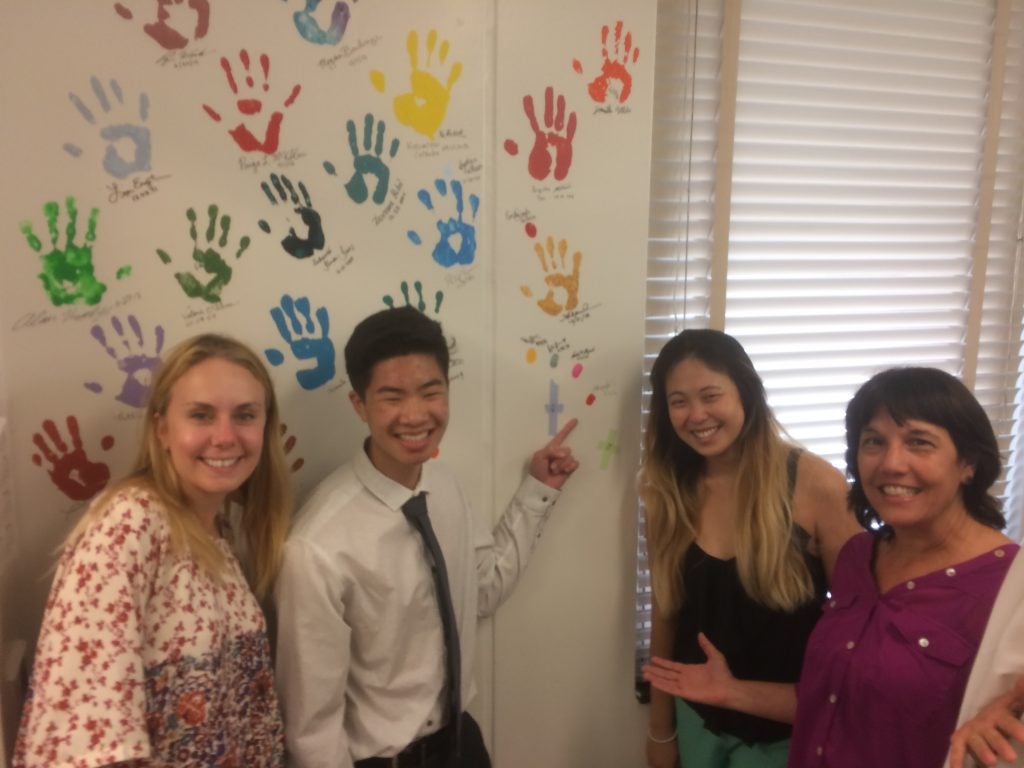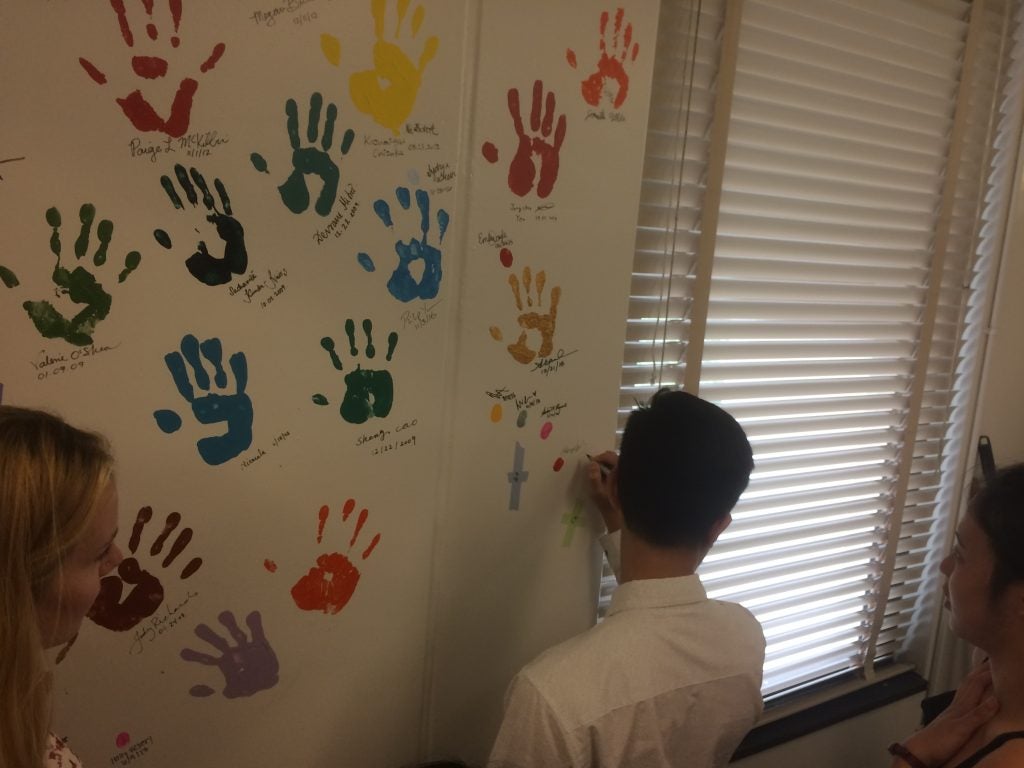New Manuscript Published: Selective base excision repair of DNA damage by the non‐base‐flipping DNA glycosylase AlkC.
New Manuscript Published: Selective base excision repair of DNA damage by the non‐base‐flipping DNA glycosylase AlkC.
The preservation of genomic integrity performed by DNA repair machinery is crucial for living organisms, and malfunctions in DNA repair machinery can have far-reaching and devastating effects on a cell’s ability to attain precise DNA replication, properly regulate cell differentiation and self-renewal, and to regulate cell growth and apoptosis, among other important cellular functions. Mutations of critical residues in DNA repair proteins can drastically reduce DNA repair capability in cells, allowing for a build-up of genomic mutations. Inherited variants in DNA repair proteins such as glycosylase MUTYH have been linked to a predisposition to tumors in patients with disease MUTYH Associated Polyposis (MAP). The David Lab is interested in delineating DNA repair mechanisms to help shed light on the etiology of cancer and other diseases, providing mechanistic and structural information that may be used, for example, to design drug molecules targeting DNA repair proteins.
New work from the David Lab examined the selective base excision repair of DNA damage by the non-base-flipping DNA glycosylase AlkC, which primarily targets alkylated-DNA damage product N3-methyladenine (3mA). This work details how AlkC selects for and excises 3mA with its non-base-flipping mechanism. The authors carried out a comprehensive phylogenetic, biochemical, and structural comparison of AlkC and AlkD proteins for comparison, which shows, notably, characteristics important for substrate specificity and why bulkier substrates are not preferred. Interestingly, AlkC’s excision mechanism involves using HEAT-like repeat domains and in most cases Ig-like domains to introduce a kink in the target DNA, helping to expose the target nucleobase, allowing for subsequent insertion of the enzyme active site to excise its target.
Click here to read more about AlkC’s non-base-flipping mechanism.
Source:
David Lab Graduate Student Spotlight: Nicole N. Nuñez
8/28/2017
Presenting the David Lab Graduate Student Spotlight, featuring Nicole Nuñez. We discuss with Nicole how she found her way onto the STEM pathway she is currently traveling as she is completing her Ph.D, and Nicole details the powerful motivation behind her passion for investigating the mechanisms of cancer, and how her path helped lead her to the David Lab. Members of the David Lab chime in with what they like about Nicole, and how she has helped them. Additionally, Nicole gives advice for the next generation of graduate students, and as this was an interview about graduate school, the topic of pizza was eventually brought to the forefront. Nicole has been a vital member of the David Lab for some time now, and we are proud to see her moving onward. Enjoy the show!
[youtube https://www.youtube.com/watch?v=MKDooqfjsWA&w=853&h=480]
Direct Link to YouTube Video:
Best Wishes to David Lab researchers Taylor, Jazmin, and Beili!
8/11/2017
As summer continues to roll on, and summer REU’s are approaching their completion, we have to say goodbye to our summer REU researchers Jazmin and Beili, and to recently graduated David Lab researchers like Taylor who are moving on to graduate school.
→Taylor McCart, who recently graduated from UC Davis with a B.S. in Pharmaceutical Chemistry, is moving on to seek her M.S. in Biochemistry at California State University, Northridge. Taylor worked with graduate student mentor Brittany Anderson-Steele, and spent a total of two years conducting research in the David Lab. We will miss Taylor here at the David Lab, but we are proud she is moving forward to graduate school, and we know she is ready to succeed at the next level.


→Jazmin Stenson spent the summer as an undergraduate researcher in the David Lab working with postdoctoral researcher Alan Raetz via the Chemistry and Chemical Biology Graduate Admissions Pathways Program (CCBGAP) from Xavier University of Louisiana. Jazmin is completing her B.S. in Biochemistry at Xavier University of Louisiana next year.
Chemistry and Chemical Biology Graduate Admissions Pathways Program:


→Beili Huang participated in summer research at the David Lab via the ACS Project SEED Program. Beili worked with graduate student mentor Kori Lay, and is starting on her B.S. in Chemical Engineering at UC Davis this fall.
ACS Project SEED Program:
https://www.acs.org/content/acs/en/education/students/highschool/seed.html

Good luck Taylor, Jazmin, and Beili! Thank you for your hard work in the David Lab!
Farewell Young Scholar Garrett Ma!
8/4/2017
Garrett has spent the summer in the David Lab conducting advanced research alongside graduate student lab members Nicole and Cindy as part of the UC Davis Young Scholars Program. Even good things come to an end, and in following with David Lab tradition, Garrett leaves his mark before saying goodbye. We wish Garrett the best of luck in the future!
UC Davis Young Scholars Program



Just Accepted Manuscript: Structure Activity Relationships Reveal Key Features of 8-Oxoguanine:Adenine Mismatch Detection by the MutY DNA Glycosylase
7/20/2017
The recently accepted manuscript, Structure Activity Relationships Reveal Key Features of 8-Oxoguanine:Adenine Mismatch Detection by the MutY DNA Glycosylase, was accepted for publication in ACS Chemical Biology.
MutY, remarkably, is able to specifically recognize and initiate repair of target OG:A mismatches from among a vast sea of natural DNA. To help reveal molecular features of OG that are critical for MutY recognition, this work explored the effects of systematic OG:A substrate alterations on MutY recognition in a cellular context. OG analogs were synthesized, assembled into OG:A modified oligonucleotides, and structure activity relationships were investigated using binding and cellular repair assays. Read the article to find out more about how specific OG modifications effect MutY glycosylase activity. Click here for the article: http://pubs.acs.org/doi/abs/10.1021/acschembio.7b00389.
Keywords: #Muty #DNA #DNARepair #BER #ModifiedNucleosides #Enzymes #8OG #DavidLab #UCDavis #glycosylase
Just Accepted Manuscript: S K-edge XAS Studies of the Effect of DNA Binding on the [Fe4S4] Site in EndoIII and MutY
7/18/2017
Check out the latest manuscript from the David Lab and collaborators: S K-edge XAS Studies of the Effect of DNA Binding on the [Fe4S4] Site in EndoIII and MutY, which was recently accepted for publication in JACS. In this work, the iron-sulfur clusters of DNA repair glycosylases Endonuclease III and MutY were examined using S K-edge X-ray Absorption Spectroscopy (XAS) in order to investigate DNA binding and solvation effects on Fe-S bond covalencies.
Click below to view the manuscript:
http://pubs.acs.org/doi/abs/10.1021/jacs.7b03966
Dare to Repair with Nicole Nuñez
6/6/2017
Take a walk with Nicole Nuñez as she illustrates how the David Lab investigates DNA repair.
Congratulations to Doug Banda and coworkers!
5/31/2017
Congratulations to David Lab authors Doug, Nicole, Michael, and Katie on their recently released article, “Repair of 8-OXOG:A Mismatches by the MUTYH Glycosylase: Mechanisms, Metals and Medicine,” in Free Radical Biology and Medicine! The final version of the article is now available online.
Link to their new article here: https://authors.elsevier.com/a/1V8Lr3AkHAI6DS.
